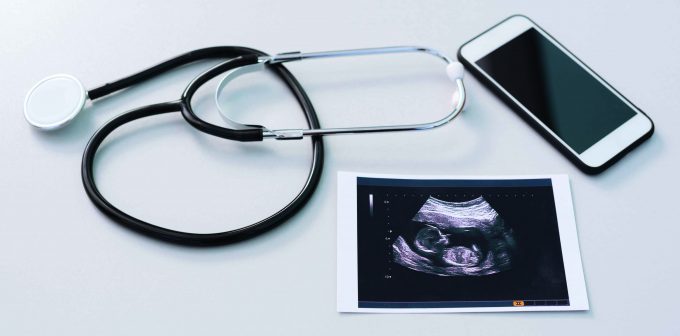
 The ultrasound machine, once a cumbersome, space-consuming device, now comes as a small probe delivering images to a smartphone to be read in “real-time”.
The ultrasound machine, once a cumbersome, space-consuming device, now comes as a small probe delivering images to a smartphone to be read in “real-time”.
“You can have your iPhone in one hand, the ultrasound in the other and you can suddenly see a whole lot more of the heart than you would otherwise be seeing,” says Dr Ben Smith, the emergency ultrasound fellowship director of the University of Tennessee.
Dr Smith, speaking at the annual SMACC emergency medicine conference earlier this month, says portable ultrasounds can be used to complement a physical exam.
Some of the many applications for ultrasounds in the emergency department include guiding central venous access, confirming pulmonary oedema and helping differentiating between various causes of collapse, Dr Smith says.
“You can do this in the patient’s house … in an ambulance or in an emergency room,” he says.
In addition to obstetric examinations, point-of-care ultrasonography has been shown to be useful in general practices in diagnosing DVTs, gallstones, shoulder dislocations and assisting in nerve blocks, joint injections and venesection.
The portable ultrasound devices can be purchased on the internet for under $3000.
However, despite their increased availability, most GPs would have to undergo further training and remain uncompensated for using ultrasound in their practices, as currently such procedures do not attract an MBS rebate.
But Dr Smith is encouraging all doctors to learn how to use the technology which he believes will become more integrated into healthcare.
He compares portable ultrasound to the first stethoscopes.
“Yes, learn how to use it, ultrasound stands to make an incredible global impact,” Dr Smith says.
The manufacturers of these portable ultrasound machines recommend doctors complete 25 scans for every application to become competent in a specific scan application.
But Dr Smith also says doctors should be wary of ultrasound inflating a false sense of confidence.
“When you first start learning any new skill, you’re going to be subject to the dreaded Dunning–Kruger effect, where your confidence outweighs your abilities,” he says.
Dr Jacob Avila, ultrasound fellow at the University of Kentucky, says portable ultrasonography is likely to be a disruptive innovation, but the most important thing is practice.
“You need to be able to acquire the images and you need to be able to interpret and utilise those images effectively, accurately and safely,” Dr Avila says.
He recommends doctors use online educational resources to help hone their skills.
Forums on social media, including Twitter, are making ultrasound images available for interpretation and discussion which will help educate doctors wanting to use this technology, Dr Avila says.
Wild Health Insights Promotional Code for our upcoming one day summit on interoperability in Australia is WHP1. To use, just click the link below, click the green tickets button and enter the code in the top right hand corner. The code gets you a 15% discount of the Early Bird rate on all ticket types.
EARLY BIRD TICKETS to Wild Health Summit on interoperability in Sydney on June 25 HERE
